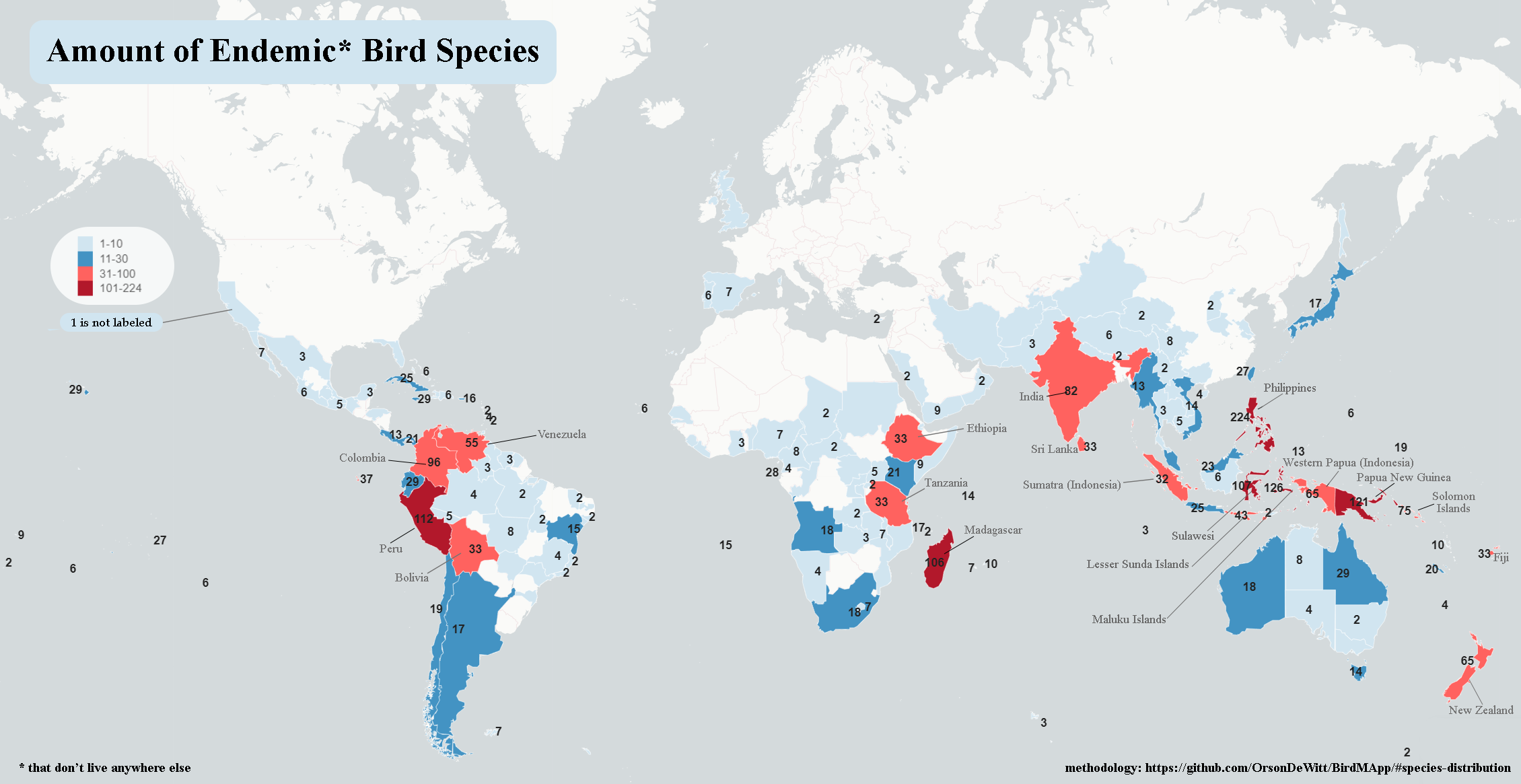Endemic Bird Species Around the World (Exploring BirdMApp Data, Part #1)

There are many curious things that I’ve uncovered when dealing with bird observation data from GBIF. For example, Estonia has 10 and 8 times as many bird observations as the neighboring Latvia and Lithuania, respectively, despite having a fraction of population. Why so? It turns out that Estonia uses A LOT of cameras for bird identification. I don’t know if the stark difference between the countries is because Latvia and Lithuania do not use as many cameras (adding to Estonia’s reputation of tech-savviness) or because they do not upload their data to GBIF. It’s a curious fact that I’d like to explore in the future.
A thing that crossed my mind as I was working with the data was that I wanted to mark species in country tables that are endemic to that country/area. I was very curious as to whether there are any endemic species in places that I travel to. I could check the data very quickly by simply filtering the data, but I knew that there wasn’t any visual representation of this (or even a table) anywhere online, so I decided I’ll make one myself and share it with the world, in case there are other curious minds searching for this information. So here it is. The methodology is still the same as it was in BirdMApp as it’s the same dataset, so I will not dive into it. Instead, I want to draw your attention to a few curious facts:
-
There are very few endemic species in the colder climates. I specifically chose not to cut off the northern hemisphere to show the stark contrast.
-
Galapagos Islands, despite being the most famous for its unique flora and fauna, is not the only special island in terms of amount of endemic species. Have you ever heard of unique biodiversity of Sao Tome and Principe, the island to the west of Central Africa, or that of French Polynesia? All those other islands with unique species urgently need better PR.
-
You will not see Antarctica with any endemic species, e.g. Emperor Penguin. This is because on my map Australian Antarctic Territory is not part of Antarctica; so the aforementioned Emperor Penguins that have been observed on Heard and MacDonald Island do not let Antarctica claim even one bird species.
Which leads me to admit the un-fun thing. This map is not perfect. It does not take into account instances when the species are endemic to a region, but are not constricted by an artificial border. For example, the Gunnison Sage-Grouse that lives on the border of Utah and Colorado. It should be taken into account, otherwise you might think most of the US is bereft of endemic species. But then, if I start to look at birds that are endemic to 2 areas and more, where do I draw the line and still keep it a meaningful graphic? There are a few approaches I could take, but I decided against making it too complicated for now. It serves as a good way to get some sense of where to find some endemic species, and which places are the most unique. If I ever want to dive deeper, I’ll combine BirdMApp with some googling; one day, I might even write a post about my adventures to these regions. For now though, it will have to remain a dream, and this map only a high-level overview from an enthusiast.